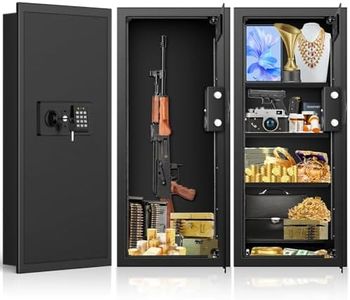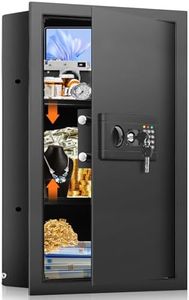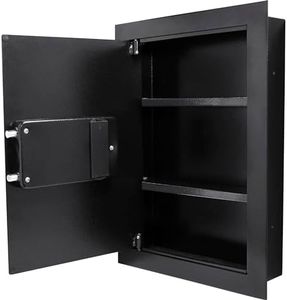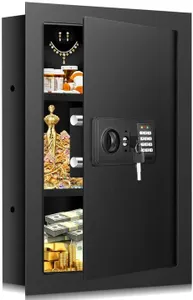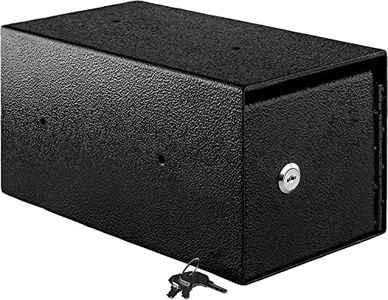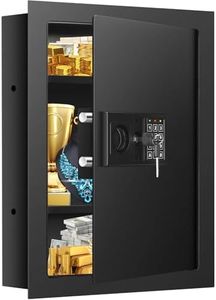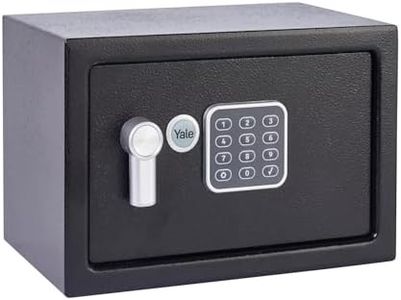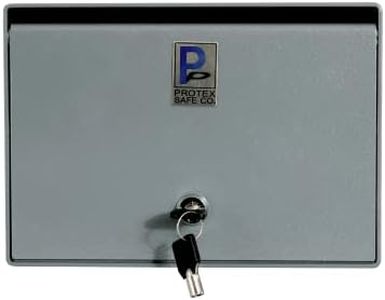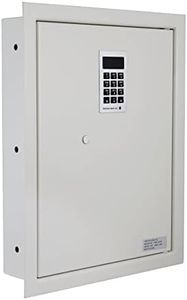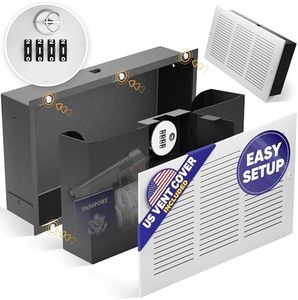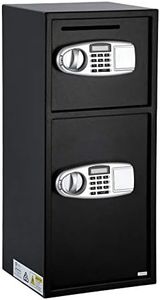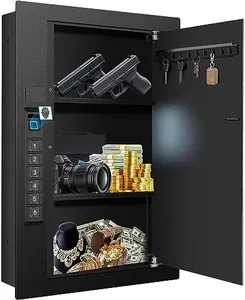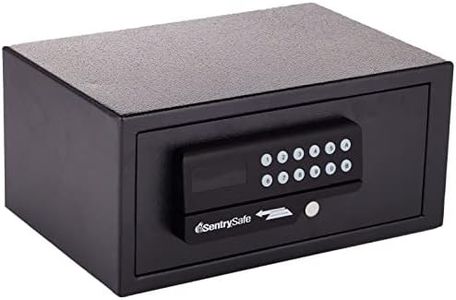We Use CookiesWe use cookies to enhance the security, performance,
functionality and for analytical and promotional activities. By continuing to browse this site you
are agreeing to our privacy policy
10 Best Wall Safes
From leading brands and best sellers available on the web.Buying Guide for the Best Wall Safes
Choosing the right wall safe involves thinking about what you want to protect, where you plan to install the safe, and how easily you want to access your belongings. Wall safes are great for keeping valuables, documents, or even small heirlooms secure and out of plain sight. As you compare different wall safes, understanding the key features will help you select one that matches your needs and living situation.Size and CapacityThe size and capacity refer to the safe’s physical dimensions and how much you can store inside. Larger safes fit more items, but require more wall space and may be more visible. Smaller safes are easier to hide but may not hold bigger documents or objects. Think about what you want to store—if it’s just passports and jewelry, a compact safe might do; but if you have larger items or want room to grow, consider a mid-sized or bigger model. Always measure potential wall space before deciding.
Wall Depth CompatibilityWall depth compatibility means how well the safe will fit within the space between your wall studs. Most homes have walls that are about 4 inches deep, but some safes require more depth, while others are designed for shallower or deeper spaces. Before buying, check your wall’s thickness, as picking a safe that’s too deep won’t fit, while too shallow might limit storage. Match the safe’s depth with your wall for a snug, secure installation.
Locking MechanismThe locking mechanism is how you open the safe and control access—common types are key locks, mechanical combination dials, and digital keypad locks. Key locks are simple but can be lost or duplicated, while combination dials are reliable and require no batteries. Digital keypads offer convenience and speed, but depend on batteries and might be at risk if codes are shared. Choose a locking method that suits your comfort level—people who prefer less hassle may like digital, while those who are forgetful of codes might find a mechanical dial or key more reliable.
Fire and Water ResistanceFire and water resistance refer to whether the safe can protect your valuables in case of a fire or flood. Some safes offer ratings specifying how long and at what temperature they can withstand fire or how much water pressure they can endure. If you’re keeping vital documents or items sensitive to heat or moisture, look for safes with good fire and water resistance. However, in-wall safes often offer less of this protection compared to standalone safes, so balance your needs; for extreme protection, specialized models or added precautions may be required.
Concealment FeaturesConcealment features help the safe stay hidden, making it less likely to be found by intruders. Some safes have flat fronts so you can hang a picture or cover over them, while others are designed to blend with wall décor or standard fixtures. If discretion is a priority, look for safes with subtle doors or instructions for easy concealment. Consider where you plan to install it—the more natural the location, the harder it is to spot.
Installation DifficultyInstallation difficulty involves how easy it is to put the safe into your wall. Some safes are made for do-it-yourself installation and come with clear instructions, while others may require professional help, especially if they’re heavier or need modifications to the wall. If you're handy and have basic tools, installation may not be hard, but for larger safes or older homes, getting a professional ensures safety and security. Factor in your comfort level with home improvement tasks when making your choice.
